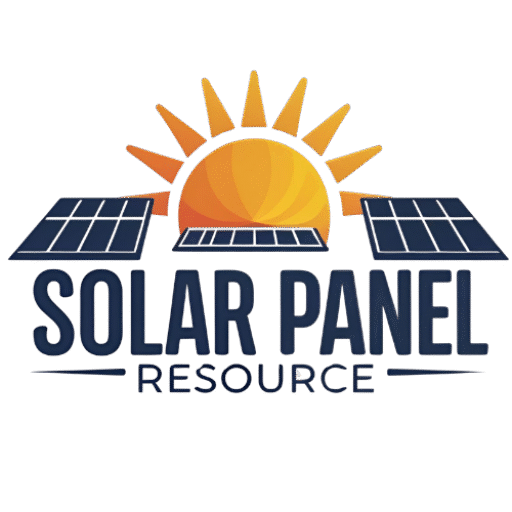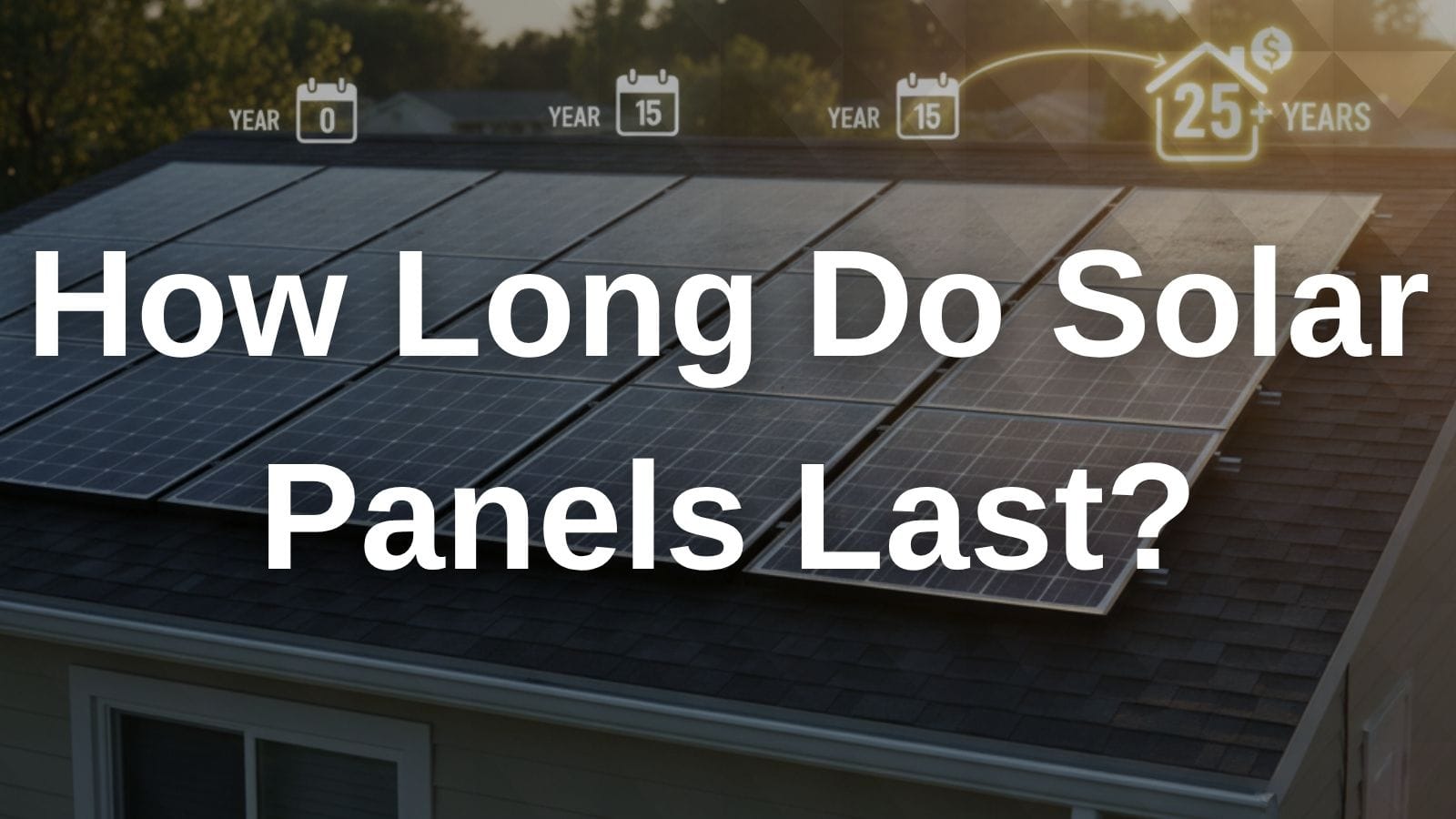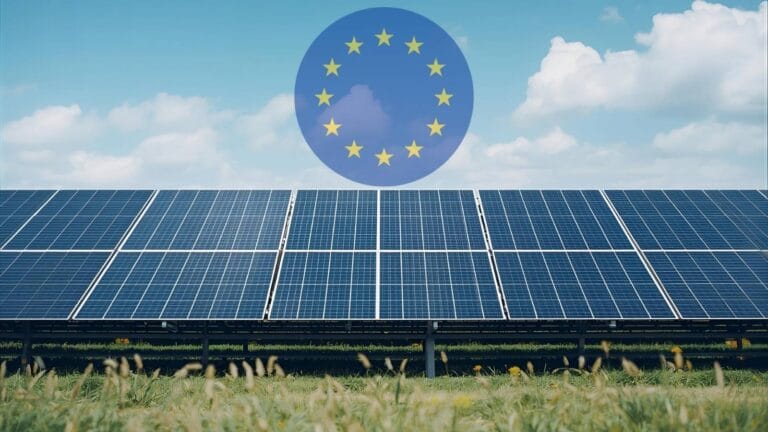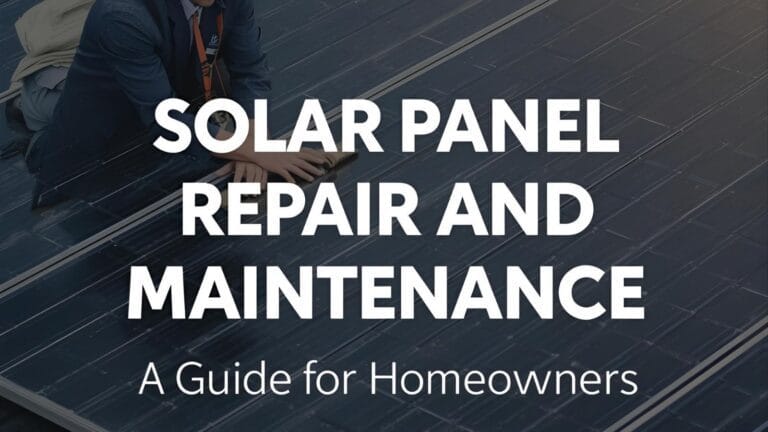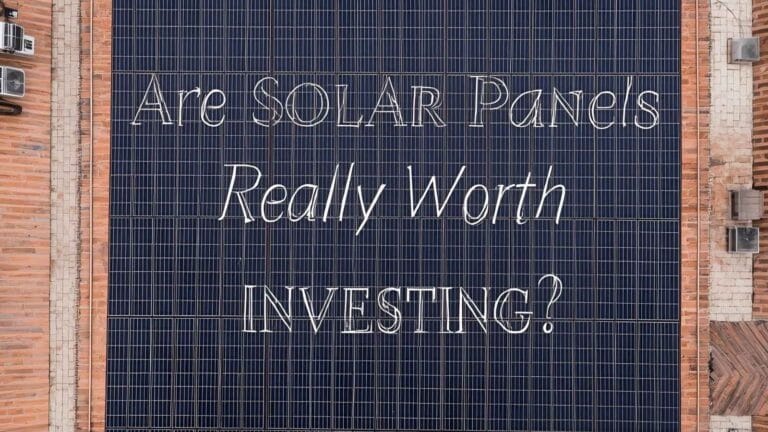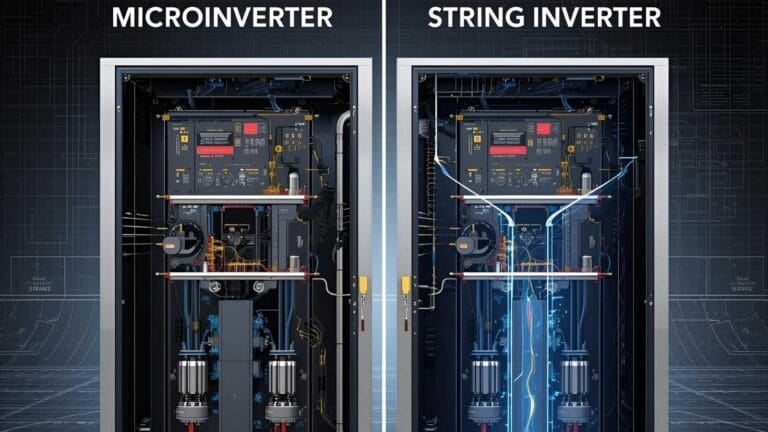How Long Do Solar Panels Last? (And How to Extend Their Life)
According to data from the International Renewable Energy Agency (IRENA), modern photovoltaic (PV) modules are not just a temporary solution; they are engineered for decades of service. This longevity is a key factor in their value, turning them into a long-term piece of infrastructure rather than a short-term expense.
As a solar energy professional, I can tell you that the lifespan of a solar panel extends far beyond its warranty. While manufacturers typically guarantee performance for 25 years, a well-maintained solar panel can continue to produce reliable energy for 30, 40, or even 50 years. Understanding their average lifespan and the factors that affect performance is critical for maximizing their long-term energy production and ensuring a truly sustainable energy future.
This article provides an expert-reviewed explanation of how long solar panels last, what to expect from your system over time, and proven methods you can use to extend their operational life.
Average Lifespan of Solar Panels
Industry standards confirm that modern Tier-1 solar panels are built to last. While the common performance warranty guarantees strong energy output for 25 to 30 years, this is often just the beginning of a panel’s life. According to research from the International Energy Agency Photovoltaic Power Systems Programme (IEA PVPS), a leading authority on solar technology, a significant number of modules continue to operate with acceptable efficiency levels well beyond their 30th year.
As a result, a solar panel’s lifespan is not defined by its warranty but by its ability to produce power efficiently over time. While the industry provides a reliable benchmark, the actual longevity of your system is directly tied to several key factors: the environmental conditions it faces (extreme heat or cold), the quality of the initial installation, and the ongoing maintenance practices you follow. This means that with proper care, your solar system can continue to produce reliable energy for decades.
Reference: https://www.irena.org/, https://iea-pvps.org/
Factors That Influence Solar Panel Lifespan
While solar panels are built to last, their actual operational life and efficiency over time are heavily influenced by a few key factors. As a solar professional, I’ve seen firsthand how these elements can make a significant difference in a system’s long-term performance.
- Module Quality This is the most crucial factor. Tier-1 manufacturers use superior materials and rigorous testing to ensure their panels are less prone to degradation. Panels with high-quality silicon cells and durable encapsulation materials degrade more slowly over time, maintaining a higher output for a longer period. This upfront quality is the best way to ensure a slower degradation rate and a higher energy yield over time.
- Installation Quality A poor installation can compromise even the highest-quality panels. Proper mounting ensures that panels are securely attached without unnecessary stress. Correct electrical wiring prevents issues like overheating and arcing, which are common causes of premature failure. Hiring a certified and experienced installer is non-negotiable for a reliable system.
- Environmental Conditions Your location’s climate plays a significant role. Panels in regions with extreme temperatures, high humidity, or frequent exposure to hail and heavy winds will naturally experience more wear. However, modern panels are designed to withstand these conditions, and a good warranty will protect you from unexpected damage.
- Maintenance Practices While solar panels require minimal maintenance, a little care goes a long way. Regular cleaning to remove dust, dirt, and leaves ensures that sunlight is not blocked, which directly impacts efficiency. Routine inspections can also catch potential issues like damaged wiring or loose connections before they become major problems.
How Efficiency Degrades Over Time
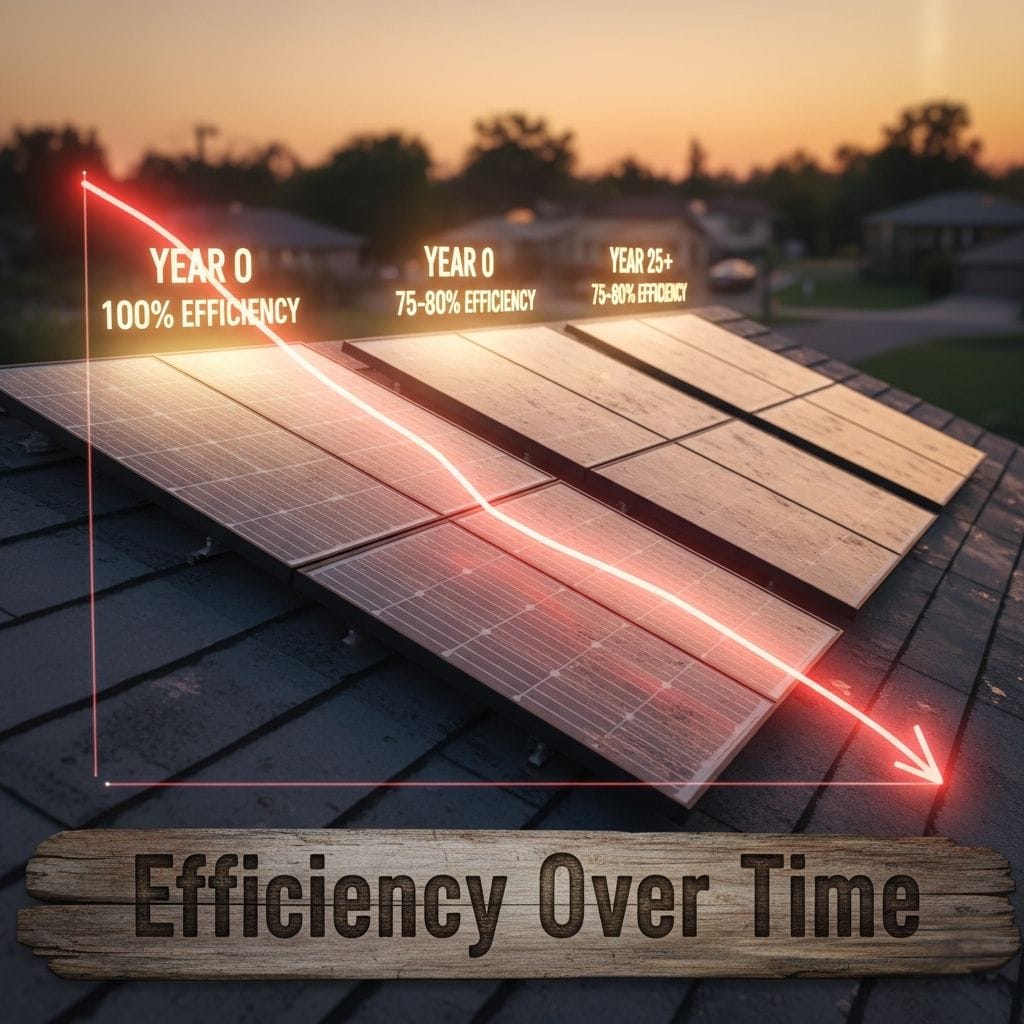
All solar panels experience a natural and gradual loss of efficiency over time, a process known as degradation. This is a critical factor to understand when evaluating a system’s long-term performance. According to research from PV Evolution Labs (PVEL), a leading independent solar testing company, the industry average annual degradation rate is between 0.3% and 0.8%. This means a panel will produce slightly less energy each year than it did in the previous one.
However, not all panels are created equal. Premium solar modules, often featuring advanced technologies like N-type or heterojunction (HJT) cells, exhibit remarkably lower degradation rates, often falling below 0.3% annually. This superior performance ensures they can maintain over 85% of their original output even after 25 years. This is why degradation warranties are a key metric to compare; they represent the manufacturer’s guarantee for the panel’s long-term performance.
Common Myths and Facts About Panel Lifespan
When researching solar technology, it’s easy to encounter misinformation about the technology’s performance and longevity. To provide clarity, here’s a look at some of the most common myths, debunked with expert-backed facts.
Myth: Cleaning solar panels is unnecessary.
Fact: This myth can directly impact your system’s performance and efficiency. While solar panels require minimal maintenance, periodic cleaning is highly recommended. Dirt, dust, pollen… (20% in some environments)… maintain peak performance and prevent long-term damage.
Myth: Cleaning solar panels is unnecessary.
Fact: This myth can directly impact your system’s performance and ROI. While solar panels require minimal maintenance, periodic cleaning is highly recommended. Dirt, dust, pollen, and bird droppings can accumulate on the surface, creating “hot spots” that reduce a panel’s output. According to solar experts, this buildup can decrease efficiency by as much as 20% in some environments. A simple, regular cleaning with a hose is often enough to maintain peak performance and prevent long-term damage.
Myth: A 25-year warranty equals the panel’s lifespan.
Fact: This is a crucial point of confusion… it is a performance guarantee. It ensures the panel will continue to produce… (typically 80-85%) after 25 years. In reality, a high-quality solar panel continues to operate and generate clean energy for many years beyond this guaranteed period, making your solar system even more reliable in the long run.
How to Extend the Life of Your Solar Panels
While solar panels are built for durability, their longevity and sustained performance depend heavily on proper care. By implementing a few straightforward best practices, you can maximize your system’s lifespan and ensure it continues to generate clean, reliable energy for decades to come.
Monitor Your System’s Performance Many modern solar systems come with monitoring apps that allow you to track your energy production in real time. Regularly checking this data is a proactive way to detect any sudden drops in performance, which could signal an underlying issue with a panel or an inverter. Early detection allows for a quick fix, ensuring your system operates at its best.
Regular Visual Inspections Take the time to visually inspect your solar array periodically. Look for any signs of physical damage, such as cracks in the glass, corrosion on the frame, or loose connections. Catching these issues early can prevent them from turning into costly, long-term problems. You can perform these checks yourself from the ground.
Proper Cleaning and Maintenance While rain can wash away some dirt, it’s not enough to maintain peak efficiency. Experts recommend a periodic cleaning of your panels to remove dust, pollen, and other debris that can accumulate and block sunlight. Use a gentle hose with normal water and avoid using abrasive materials or harsh chemicals that could scratch the glass or damage the seals.
Ensure Proper Ventilation Heat is a primary cause of solar panel degradation. A proper installation ensures that there is enough space between the panels and the roof to allow for adequate airflow. This ventilation helps to cool the modules and minimize temperature stress, which in turn helps to maintain their efficiency and extend their lifespan.
The Critical Role of Warranties and Certifications
The most concrete evidence of a manufacturer’s confidence in their product is its warranty. There are two main types to understand: the “product warranty” and the “performance warranty.” A typical product warranty covers defects in materials or workmanship for 10–15 years. The performance warranty is the long-term assurance, guaranteeing the panel will still produce a specific percentage of its original output (often 80–85%) after 25 years.
Beyond warranties, certifications are the gold standard for verifying a panel’s quality and safety. Certifications such as IEC 61215 (for performance) and IEC 61730 (for safety) confirm that the panels have undergone rigorous, third-party testing and comply with international standards. Choosing panels with these and other reputable certifications ensures a longer, safer service life and protects the panel’s long-term performance for decades to come.
Impact of Technology Advancements

The solar industry isn’t standing still; continuous innovation is extending the life and performance of panels. New technologies have emerged that directly address common degradation issues, offering even greater long-term performance.
Modern modules now use advanced cell technologies like N-type TOPCon and heterojunction (HJT) cells. These cells have significantly improved resistance to factors like Potential Induced Degradation (PID), a phenomenon that can reduce a panel’s output over time. Studies from independent testing authorities like TÜV Rheinland show that these advanced modules maintain a consistently higher efficiency over their lifespan when compared to conventional P-type cells.
As these new technologies become more mainstream, the average operational lifespan and efficiency of solar panels are expected to increase even further. This ensures that a solar system installed today is built to perform not just for the next 25 years, but potentially for the next 40 to 50 years.
Recycling and End-of-Life Management
One of the most common concerns about solar energy is what happens to the panels at the end of their long lifespan. Contrary to the misconception that they simply become landfill waste, the solar industry has a growing focus on sustainability and recycling. As an expert in this field, I can tell you that a well-designed solar panel is not just a way to generate energy, but also a fully recyclable resource.
Many manufacturers now operate “take-back programs,” which are designed to responsibly collect and recycle old solar panels. These programs focus on recovering valuable materials such as glass, silicon, and aluminum. According to a report by the International Renewable Energy Agency (IRENA), by 2030, the global recycling of PV panels could recover millions of metric tons of valuable materials. This is projected to supply a significant portion of the raw materials needed for new module production, creating a truly circular economy.
Responsible manufacturers are often transparent and have well-established recycling policies. Choosing brands with clear end-of-life management programs not only supports environmental sustainability but also ensures your long-term system aligns with a cleaner and more responsible future.
The answer to how long solar panels last is clear: high-quality modules commonly deliver over 25 years of reliable output, and many exceed 30 years with proper care. By following expert maintenance guidelines, selecting panels with proven certifications, and monitoring performance data, owners can maximize efficiency and extend the operational life of their solar system.
Maintenance Practices for Maximum Output
While the biggest factor in cloudy-day performance is outside of your control, a few simple maintenance practices can ensure your system is always operating at its best. Proactive care is key to getting the most out of your system’s energy output, especially in climates with variable weather.
- Regularly Clean Panel Surfaces A surprising amount of power can be lost to dirt, dust, pollen, and bird droppings. This buildup is particularly detrimental on cloudy days because it blocks the very diffuse light your panels rely on. While rain can help, it’s not a substitute for a thorough cleaning. Experts recommend periodically cleaning your panels with a hose to ensure their surface is clear and ready to absorb every bit of available light.
- Inspect Wiring and Mounting Structures Your solar panels are exposed to the elements year-round. Over time, weather-related wear can affect your system. It’s a good practice to visually inspect your wiring and mounting structures for any signs of corrosion, loose connections, or physical damage. A simple inspection can prevent a minor issue from becoming a costly repair and ensure your system’s long-term safety and performance.
- Monitor System Performance Most modern solar systems come with a monitoring app that allows you to track your energy production in real time. Regularly checking this data is a powerful way to identify any unusual drops in output. If you notice a sudden dip in production that isn’t related to the weather, it could signal an issue with a single panel, a microinverter, or your system’s overall performance. Early detection allows you to resolve the problem quickly and ensure you’re not missing out on energy production.
A Lifetime of Reliable Energy
The answer to “how long do solar panels last?” is clear: while the standard performance warranty guarantees 25 to 30 years, the actual operational life of a well-maintained, high-quality panel often extends to 40 years or more.
As this guide has shown, longevity is not a single number, but a combination of key factors. It depends on the panel’s degradation rate (with newer N-type cells outperforming older models), the quality of the initial installation, adherence to maintenance best practices, and choosing panels with proven certifications (like IEC and UL).
y understanding these technical realities—from degradation and warranties to recycling—you can ensure your solar system operates at peak performance and provides reliable, clean energy for decades to come.
Click here to view other articles on our blog.

Solar Energy Enthusiast & Renewable Energy Researcher
Vural’s journey into solar energy began four years ago, driven by frequent power outages and high electricity bills at his own home. He has since gained hands-on experience with both personal and commercial solar projects. At solarpanelresource.com, Vural shares his real-world insights and in-depth research to guide homeowners and business owners on their own path to energy independence.
